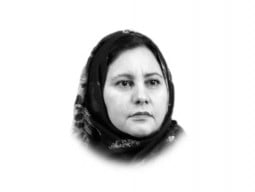
Human-induced climate changes have begun putting increasing pressure on already stressed natural systems on which life on our planet depends. Increased carbon dioxide in the atmosphere has changed precipitation levels, causing more erratic and intense floods, and droughts. Global warming is triggering severe glacial melts which are threatening vital river systems fed by mountain-based glaciers, such as the mighty Indus. Melting ice at the polar caps is causing sea levels to rise in turn threatening coastal areas and low-lying countries, such as the Maldives. Extreme heatwaves are another growing problem, which has now begun taking a visible toll on both humans and wildlife.
Summer temperatures have been soaring over the past several years. This current year seems to be the warmest year on record. And, according to varied predictions, average annual temperatures are going to continue increasing in the foreseeable future.
Much can be said about the multidimensional impacts of increasing temperatures on the natural world, but even if we focus primarily on human beings, it is important to realise that heat does not impact all people equally. Climate-related temperature rises make things more difficult for the already vulnerable, including the poor, and especially women. Poorer women have less mobility, and even less control over their meager household resources, compared to men.
Access to resources enables people to be more adaptable in the face of climate related threats. For example, those who have the luxury of air conditioning, or can afford to stay indoors when temperatures soar, are not so bothered by a couple of degrees of additional heat. However, poor workers, for instance, cannot even take breaks from their manual labour when temperature spikes without the consent of their employers, many of whom operate informally, and pay no heed to regulatory frameworks. The situation is even worse for poor women.
According to research cited by the IPCC, women are generally exhibiting higher rates of illnesses and mortality due to increased heat. There is growing evidence showing a correlation between heat exposure and child giving related complications such as pre-term births, miscarriages, and even stillbirths. Women are also experiencing an increased social burden of being caregivers to multiple members of their households, who may also be suffering from heat stress. Even working around heat sources like stoves to cook household meals becomes more dangerous when temperatures are dangerously high, and ventilation is inadequate. Organisations working with poor women have noted how poorer women usually reduce water consumption to deal with inadequate access to sanitation services. Drinking less water minimises the need to urinate, but it is very unhealthy in the long run, and it also amplifies the risks of dehydration on hot days.
In underserved areas, be it in rural areas or in the urban slums, drinking water often doesn't come from a tap. Besides adding to the household burden for women, the ordeal to obtain water is a major reason why girls drop out from school. Women and girls must wait in long queues, or walk long distances, to get water. With soaring temperatures, women and girls are subjected to the added risk of suffering heatstroke while they are out getting water for their families.
Policymakers in poorer countries have yet to show the proactivity needed to effectively contend with emergent threats like unprecedented heatwaves. Besides paying serious attention to addressing gender inequalities and investing more in healthcare, some important steps can be taken that do not need significant resources. Planting more trees can lessen heat, especially in overcrowded cities. Improving access to sanitation and drinking water is a bigger challenge, but investing in more community taps and wells which provide safe drinking water is not as expensive. NGOs have begun establishing low-cost and women-friendly cooling zones in densely crowded cities like Dhaka, which offer shaded areas, water booths and access to bathrooms to ordinary citizens. Such modest measures can be replicated more widely, and they can go a long way in helping poor people, especially women, contend with dangerously high temperatures.


1717587923-0/jake-paul-vs-mike-tyson-(1)1717587923-0-165x106.webp)


1725443747-0/Untitled-design-(5)1725443747-0-165x106.webp)









COMMENTS
Comments are moderated and generally will be posted if they are on-topic and not abusive.
For more information, please see our Comments FAQ